If your workouts always have you moving, it may be time to add some isometric exercises to take your results to the next level.
“Isometric exercises increase the target muscle’s time under tension, which is a key growth stimulus,” explains Trevor Thieme, C.S.C.S.
What Is Isometric Exercise?
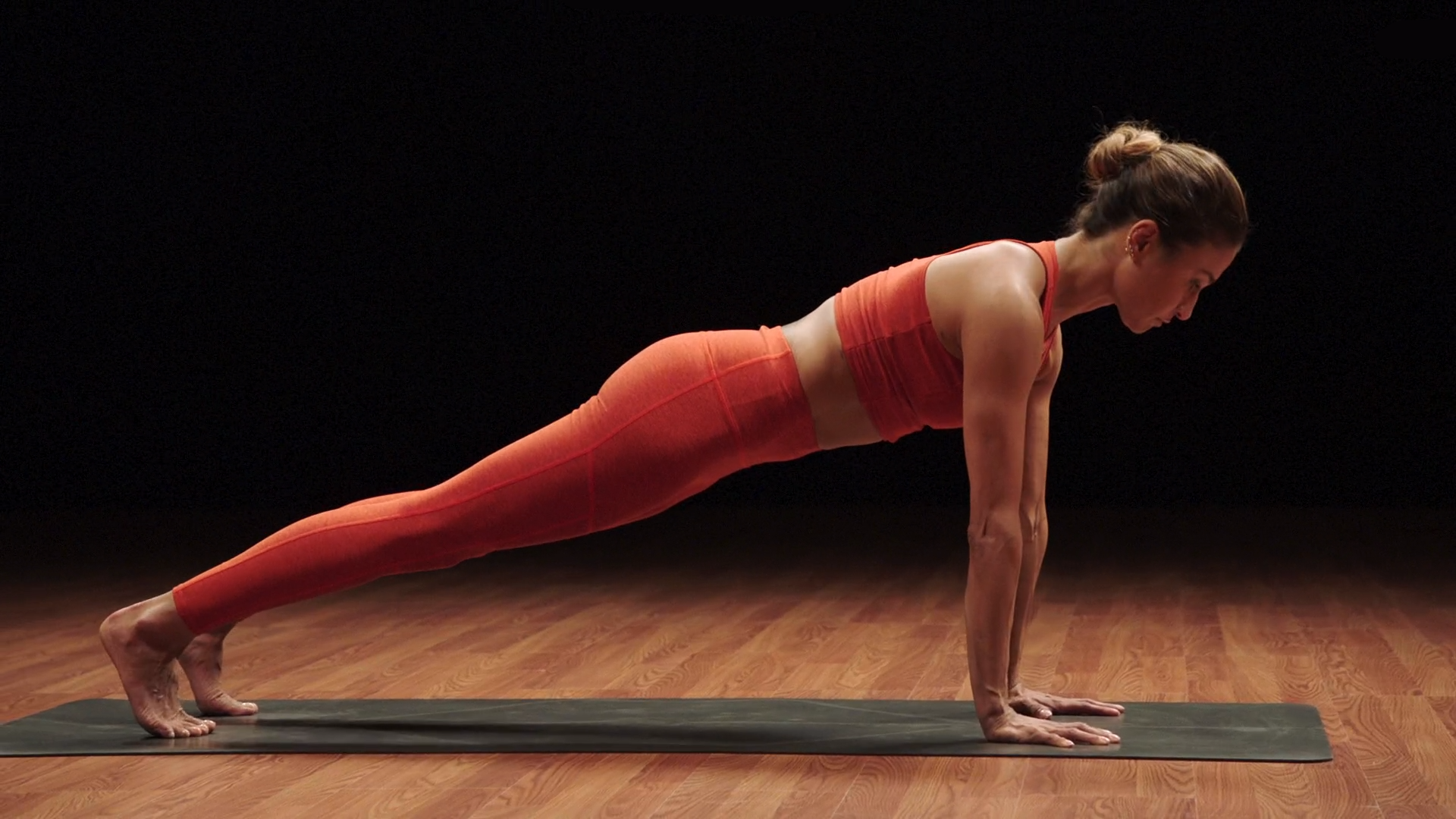
Put simply, an isometric exercise is one that engages muscle without movement. Instead, you pick one position and hold it.
One example of isometric exercise that immediately comes to mind for most people is the plank. And that exercise alone proves that even if isometric exercises look easy, they’re anything but.
Holding a position for 5 to 30 seconds or more takes a lot of work and, unlike your traditional up-and-down exercise, they don’t give you a break.
That’s part of what makes isometric exercises so great for people with tight schedules or anyone looking to be as time-efficient as possible. Isometric exercises allow you to train your body, hard, in minimal time with little to no equipment.
Another perk for those working out at home is that the lack of movement makes isometric exercises easier to perform in tight quarters — without bumping into or knocking over anything.
Isometric vs. Isotonic Exercise
They sound similar, but isometric and isotonic exercises involve different forms of muscle actions. Obviously they share the same prefix, “iso,” meaning “same.”
Isometric exercises describe those in which a muscle’s length remains constant. For example, in a plank or wall sit, the muscles are working, but not actively changing lengths.
Isotonic exercises, however, require the shortening and lengthening of muscles — but while maintaining the same tension.
For example, when you lower into a squat, muscles lengthen or act eccentrically. As you stand back up, the muscles shorten, acting concentrically or contracting, explains Layne Nordquist, C.P.T., a master trainer with VASA Fitness in Denver.
The resistance placed on the body is another critical component of isometric vs. isotonic exercises. In isometric exercises, the load placed on a given muscle is equal to the force the muscle generates — hence the “hold it right there” stalemate.
In isotonic exercises, however, the amount of force generated by the muscle changes — even if the tension stays the same.
In the eccentric phase, the force placed on the muscle is greater than what’s generated by the muscle. In the concentric phase, the force placed on the muscle is less than what the muscle generates.
Interestingly, your body’s muscles are stronger acting isometrically than they are concentrically, according to Nordquist. Think about it: It’s easier to hang out at the bottom of a lunge than it is to get up out of it.
11 Isometric Exercises for Total-Body Strength
These isometric exercise examples are great foundational moves to add to any strength-training routine. When performing these and any isometric exercises, it’s important to emphasize form first and foremost.
Even if you can hold a plank for one minute, what really matters is the time spent holding it with full-body tension and good form, even if it’s for only 15 seconds.
The same goes for all of the following isometric exercises. Aim to bring yourself to fatigue, but not failure, with each.
1. Forearm plank
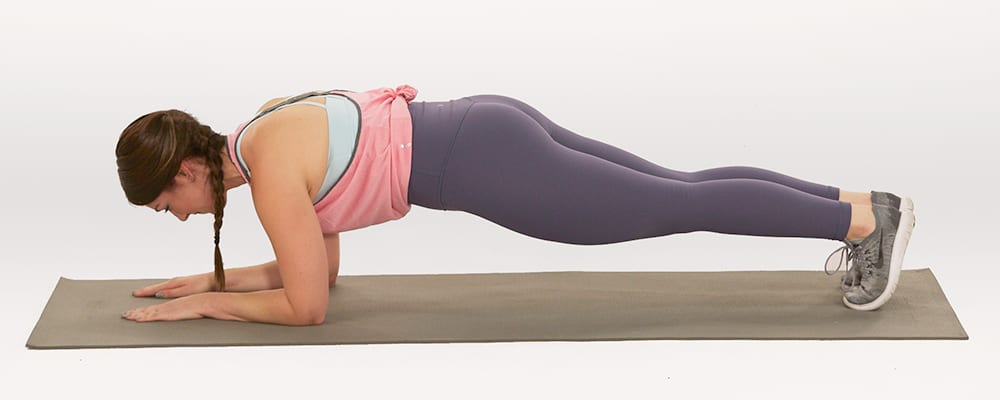
- Assume a push-up position, aligning your shoulders over your wrists, and drop down to your elbows, resting on your forearms. Your arms should be parallel, with your palms facing down.
- Extend your legs behind you, engaging your hamstrings and quads. Balancing on the balls of your feet, push through your heels to further activate your leg muscles.
- Press through your shoulders to dome your upper back. This move will protect your joints. Avoid arching your low back by pulling in your belly to engage your core. Squeeze your glutes.
- Isometrically pull your elbows toward your toes. Take deep breaths to oxygenate your muscles so that they can work hard to hold your body in a static position.
- Hold until fatigued. (Can also be performed on your hands as a high plank and on each side as a side plank.)
2. Low squat
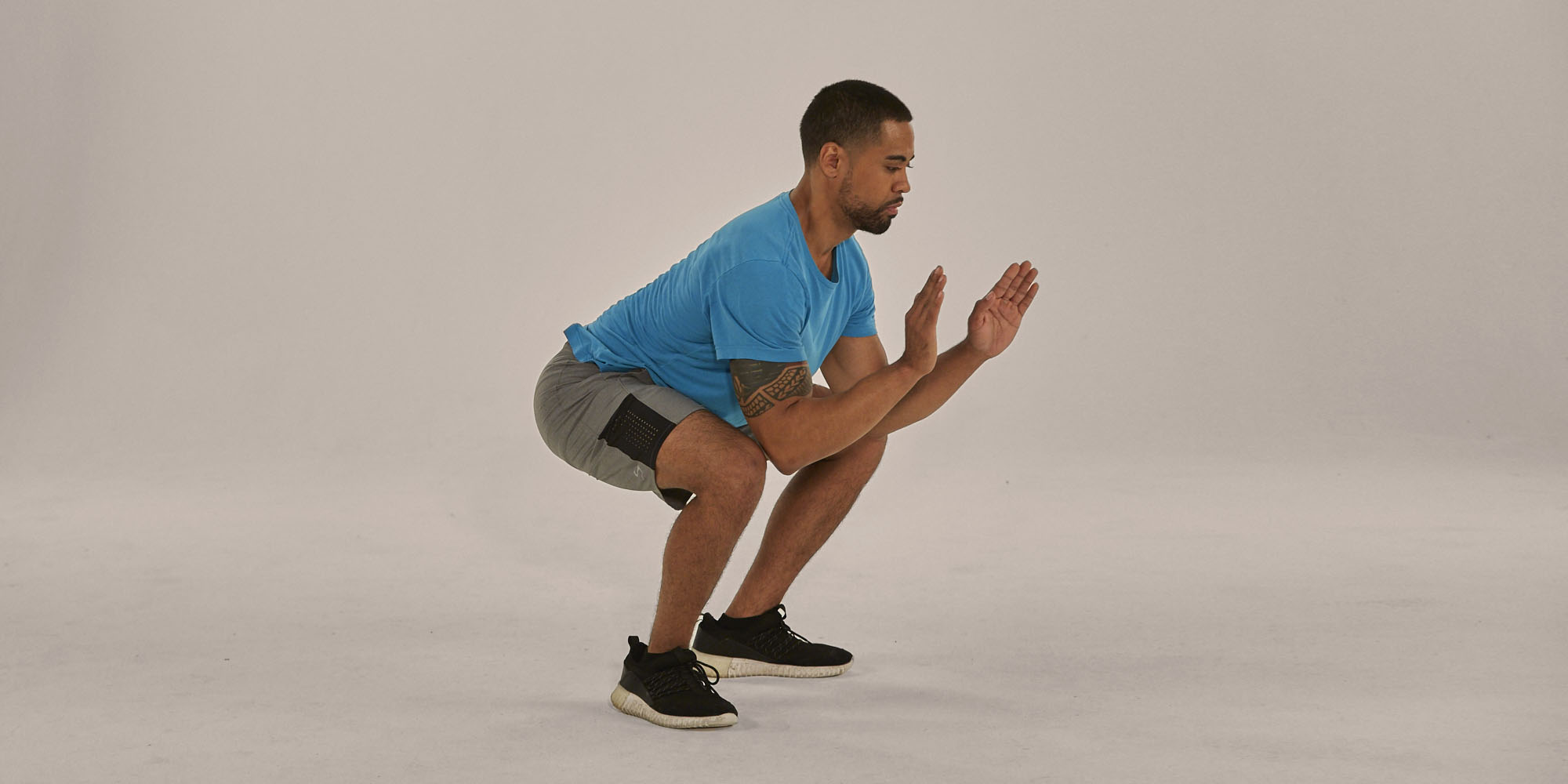
- Stand tall with your feet hip- to shoulder-width apart and your hands by your sides, toes pointed forward.
- Keeping your back flat and core braced, push your hips back, bend your knees, extend your arms forward, and lower your body as far as possible while still maintaining tension in your lower body.
- Hold for time.
3. Wall sit
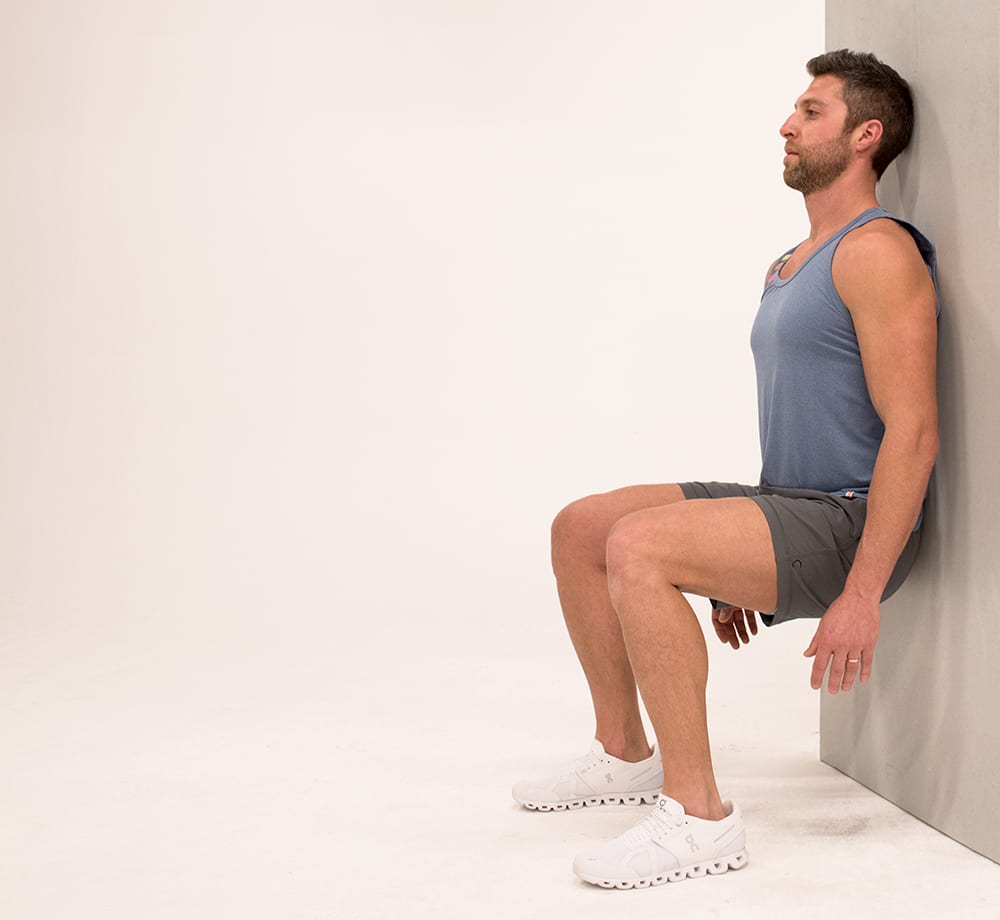
- Stand with your back against a wall, your feet hip-width apart and your hands by your sides.
- Slide down the wall until your hips and knees are 90 degrees, with your shoulders and butt touching the wall.
- Hold until fatigued.
4. Isometric push-up
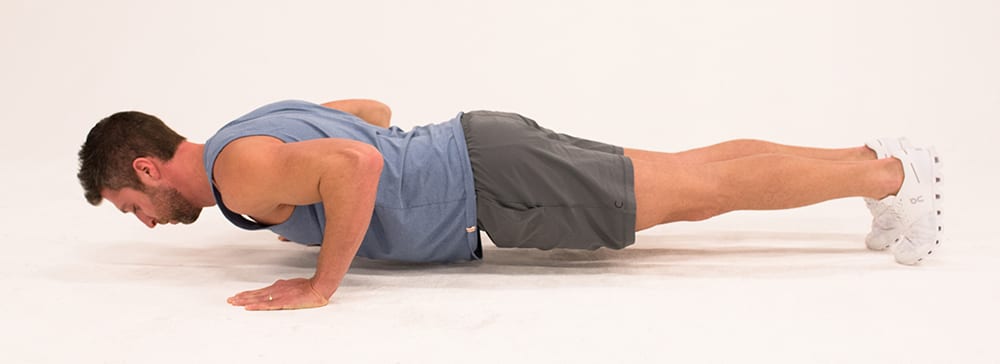
- Get on all fours with your feet together, your body straight from head to heels, and your hands stacked under (but slightly wider than) your shoulders.
- Bend your elbows so that your upper arms flare out diagonally from your torso (you should form an arrow when viewed from above).
- Lower your body until your elbows form 90-degree angles, and hold until fatigued.
5. Static lunge
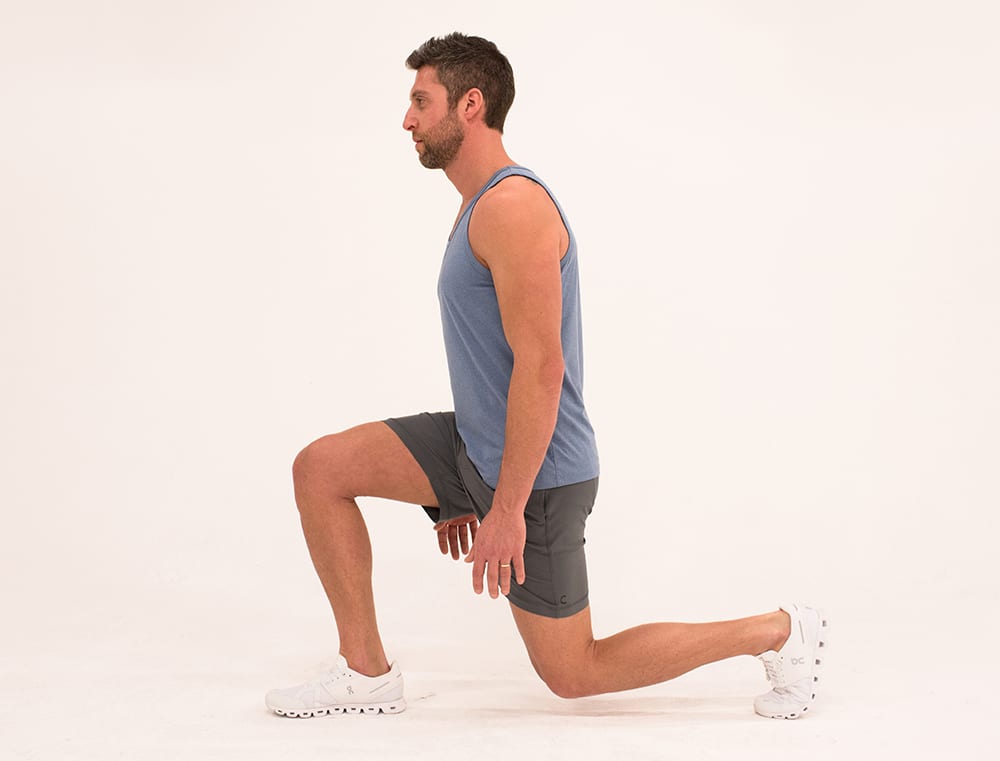
- Stand tall with your feet hip-width apart and your hands at your sides.
- Keeping your chest up, shoulders back, back flat, and core engaged, take a large step forward with your right foot. Lower your body until your front thigh is parallel with the ground and your left knee is bent 90 degrees.
- Hold until fatigued, performing equal reps on both sides.
6. Dumbbell curl with static hold
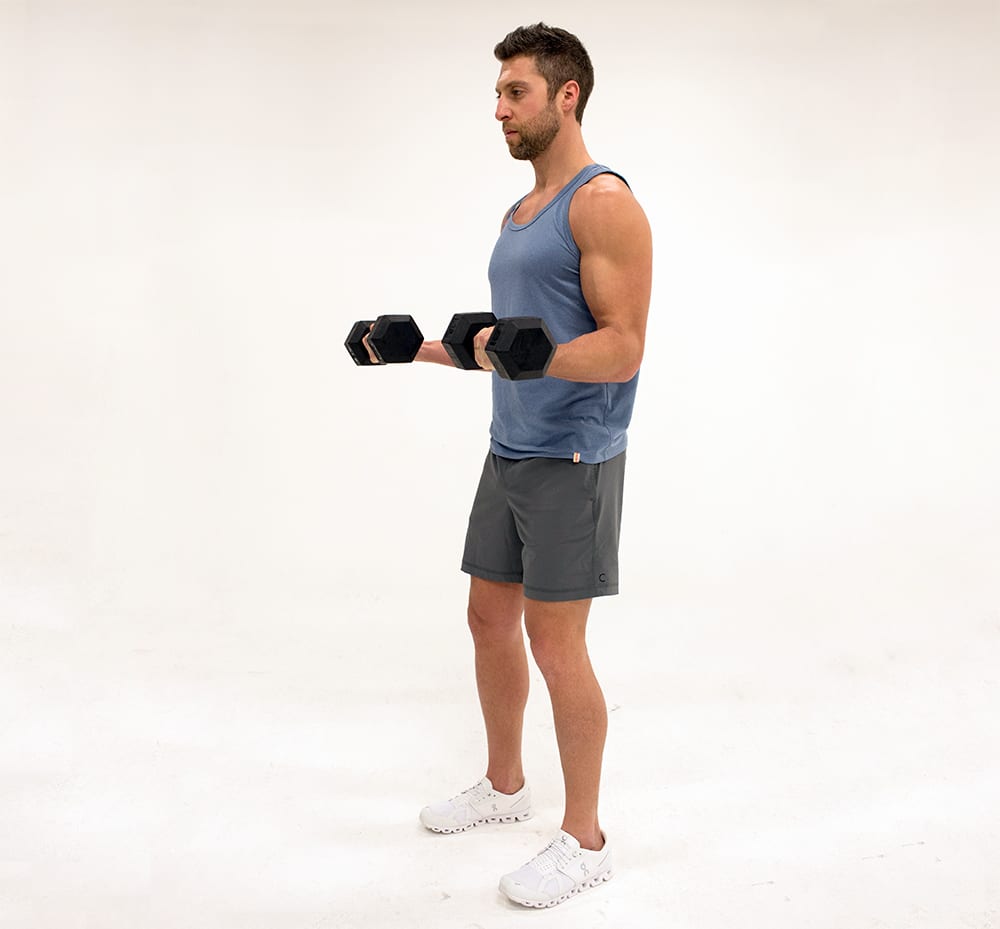
- Stand holding a pair of dumbbells at arm’s length by your sides, palms facing forward.
- Keeping your elbows tucked in and your upper arms locked in place, curl the dumbbells until your forearms are parallel to the floor.
- Hold until fatigued.
7. Isometric bench press
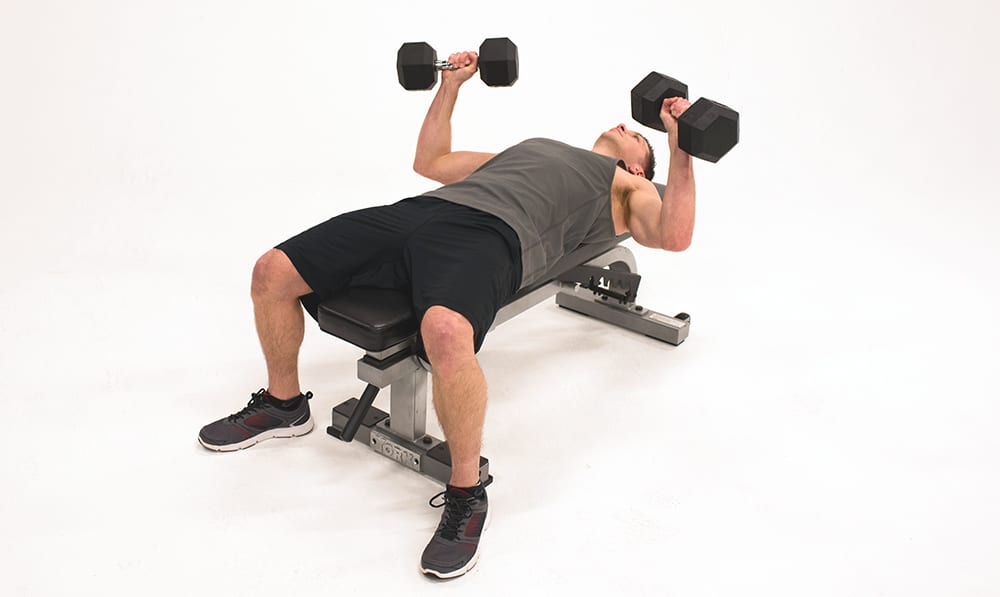
- Lie on a flat bench holding a pair of dumbbells directly above your chest with your palms facing forward. Your head, upper back, and butt should touch the bench, and your feet should be flat on the floor.
- Slowly lower the dumbbells to the sides of your chest, keeping your elbows close to your body.
- Stop when the weights are a few inches above your chest, and hold until fatigued.
8. Dead hang
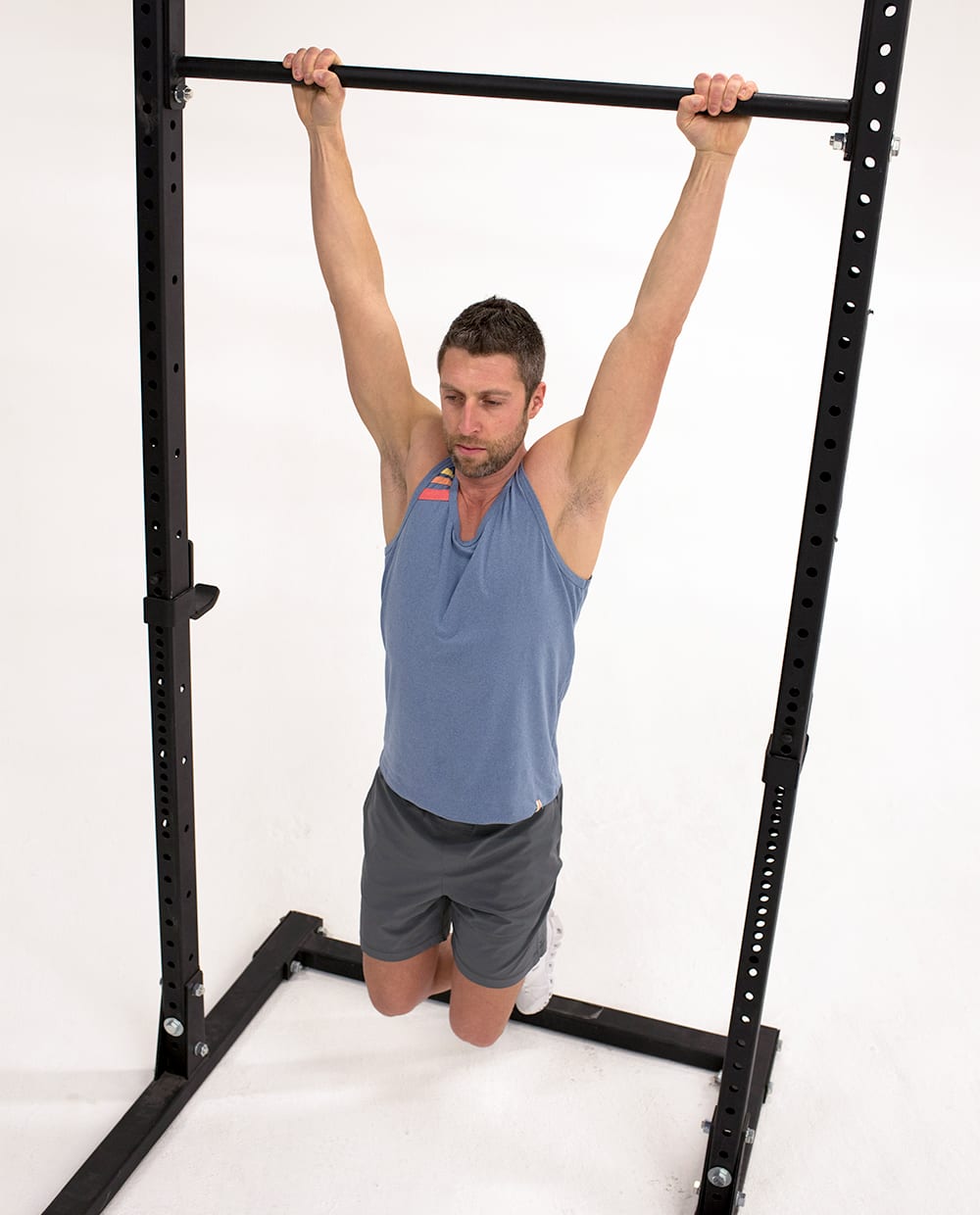
- Grab a pull-up bar with an over- or underhand grip, your hands shoulder-width apart.
- Allow your body to hang with your legs crossed behind you or toes pointed toward the floor.
- Hold until fatigued.
9. Scapular retraction
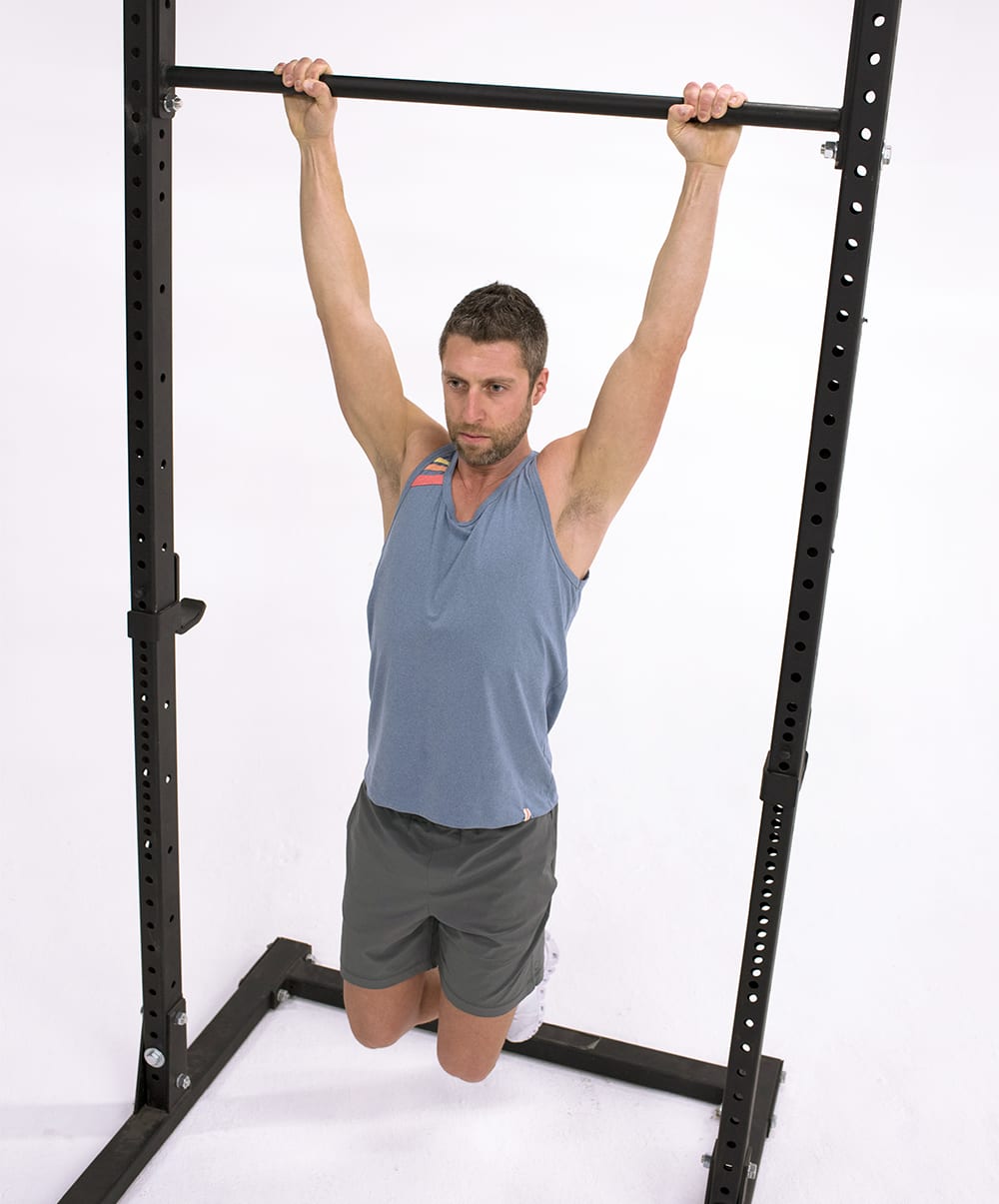
- Grab a pull-up bar with an overhand grip, your hands shoulder-width apart, and let your body hang.
- Draw your shoulders down and back to raise your shoulders just slightly toward the bar.
- Hold until fatigued.
10. Flexed-arm hang
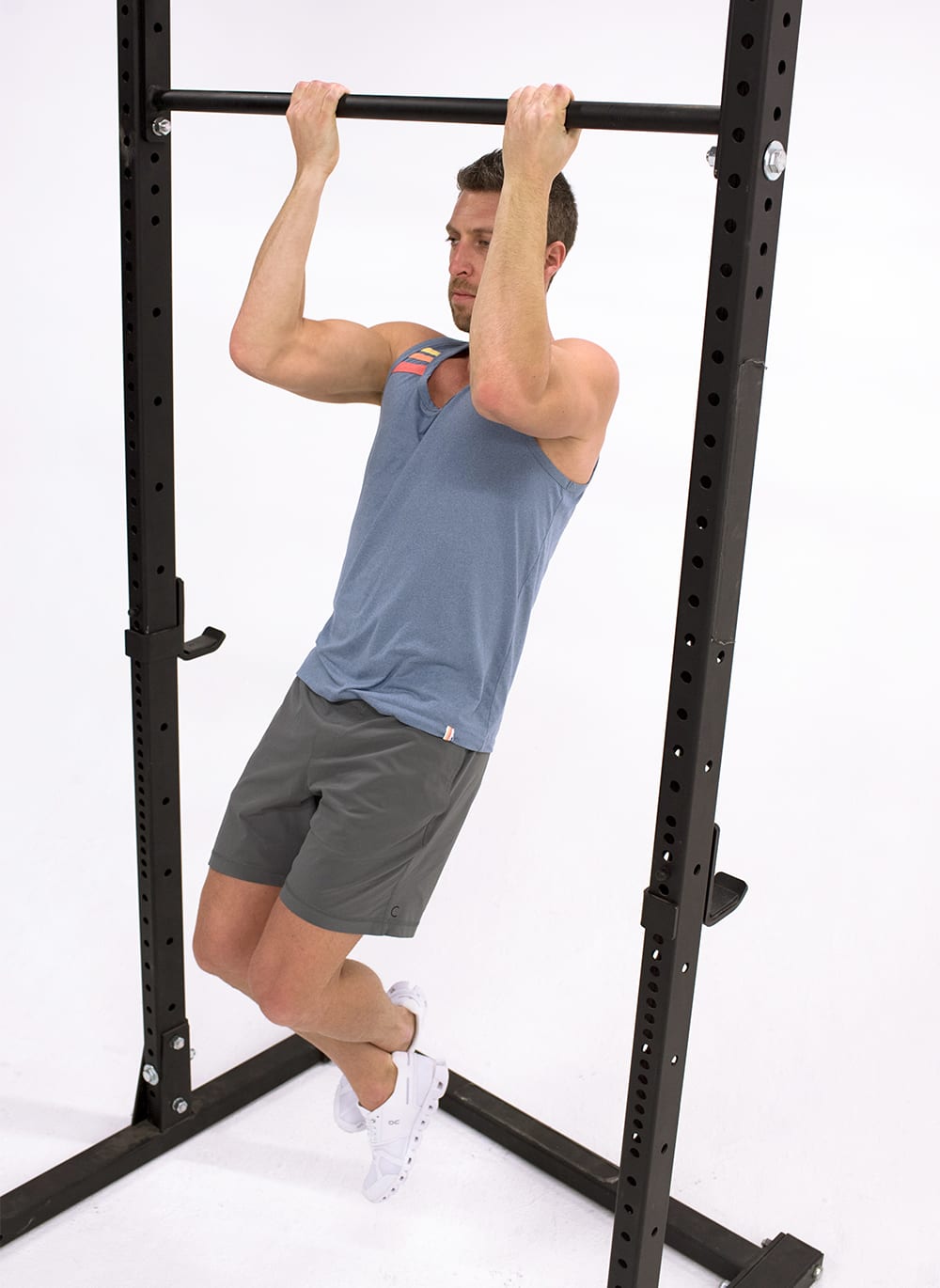
- Grab a pull-up bar with an underhand grip, your hands shoulder-width apart, and let your body hang.
- Pinch your shoulder blades down, then bend your elbows until your upper arms are parallel to the floor.
- Hold until fatigued.
11. Hanging hollow-body hold
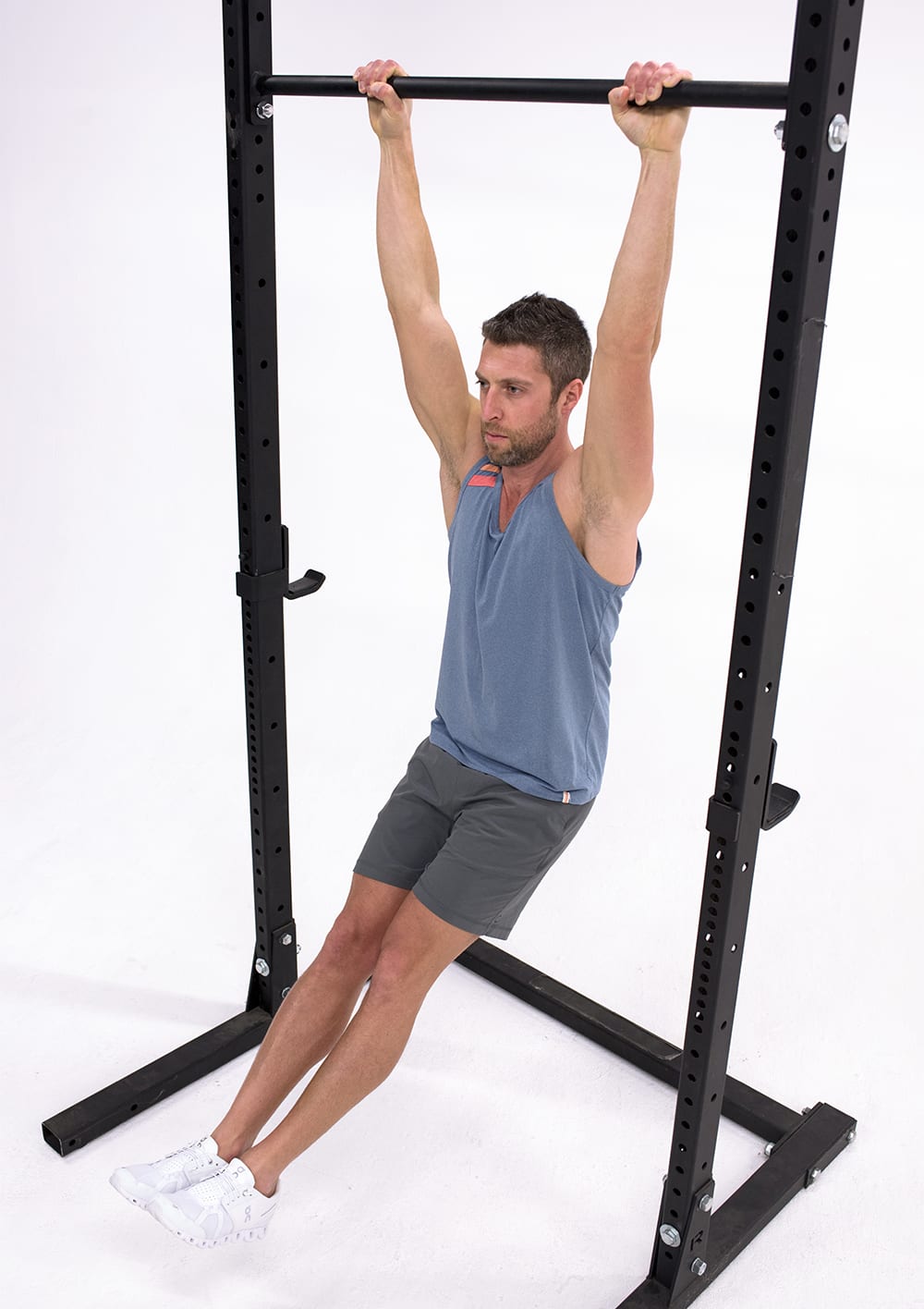
- Grab a pull-up bar with an overhand grip, your hands shoulder-width apart, and let your body hang.
- Pinch your shoulder blades down, and position your feet just in front of your body, with your legs straight. Engage your core. Your body should form a gentle C shape.
- Hold until fatigued.
Benefits of Isometric Exercise

Isometric exercises allow you to perform muscle actions in which you’re naturally strong. And because your body is physically able to hold these positions, you’re able to add more time under tension than you could by performing isotonic sets for the same amount of time.
However, there are limitations to not working your body through concentric and eccentric muscle actions as well.
“Because isometric exercises require you to hold a specific position, they build strength only in that position,” Thieme says. “That can be beneficial if you’re trying to overcome a sticking point (i.e., the toughest part of an exercise, such as the bottom of a bench press).”
It can also come in handy when you’re recovering from an injury or if you have musculoskeletal issues in which moving through full range of motion is painful or contraindicated.
However, you would have to perform countless reps — each at an ever-so-slightly different joint angle — to build strength through your full range of motion with isometric exercises. It’s much more functional and practical to use isotonic exercises to develop strength through the full range of motion.
“Also, because they’re performed in a static position, they also won’t help you improve speed, explosive power, or athletic performance,” he says.
For that reason, it’s best to use isometric exercises as a complement to your current exercise routine, rather than as a replacement for all isotonic exercises. By combining isometric and isotonic exercises, you can best reap the benefits of both training styles, Nordquist says.
Here are some of the benefits of isometric exercises.
1. Overcoming sticking points
By training the hardest part of each exercise, you remove bottlenecks to better performance.
2. Injury recovery
Strengthen your muscles while avoiding painful movements.
3. Better blood pressure
Research suggests that isometric exercises improve blood pressure as well as, if not better than, aerobic and isotonic exercises.
4. Stability
Work your body’s stabilizer muscles to improve joint health and function.
5. Core strength
Train your core to resist movement and keep your spine in healthy alignment.

